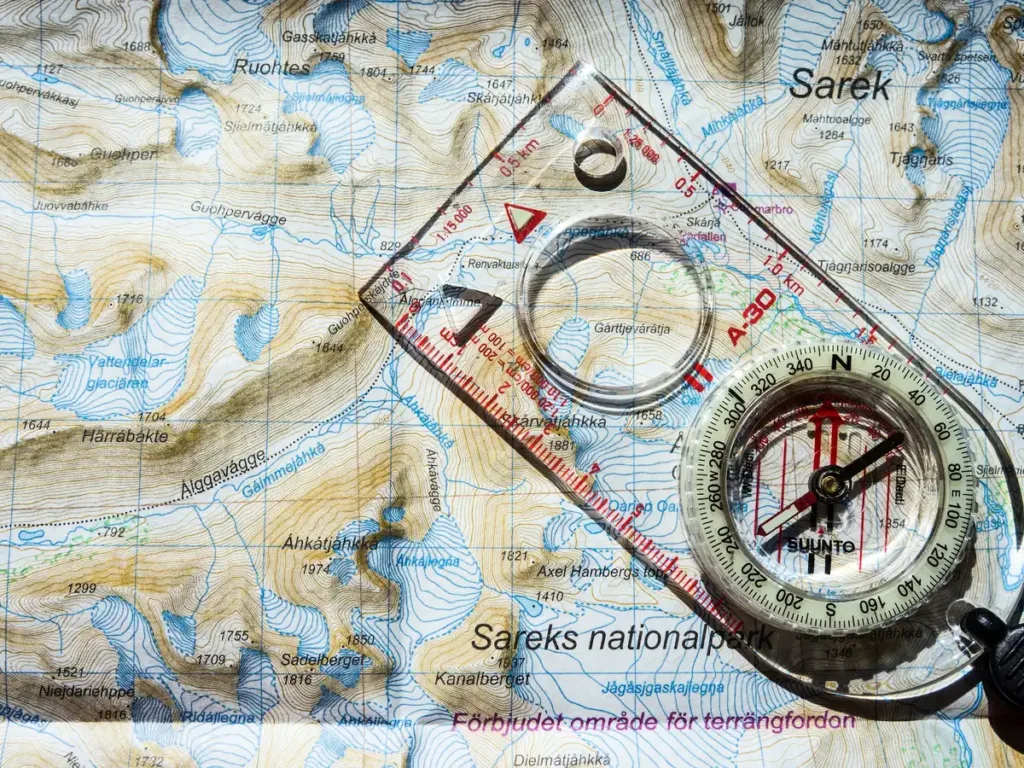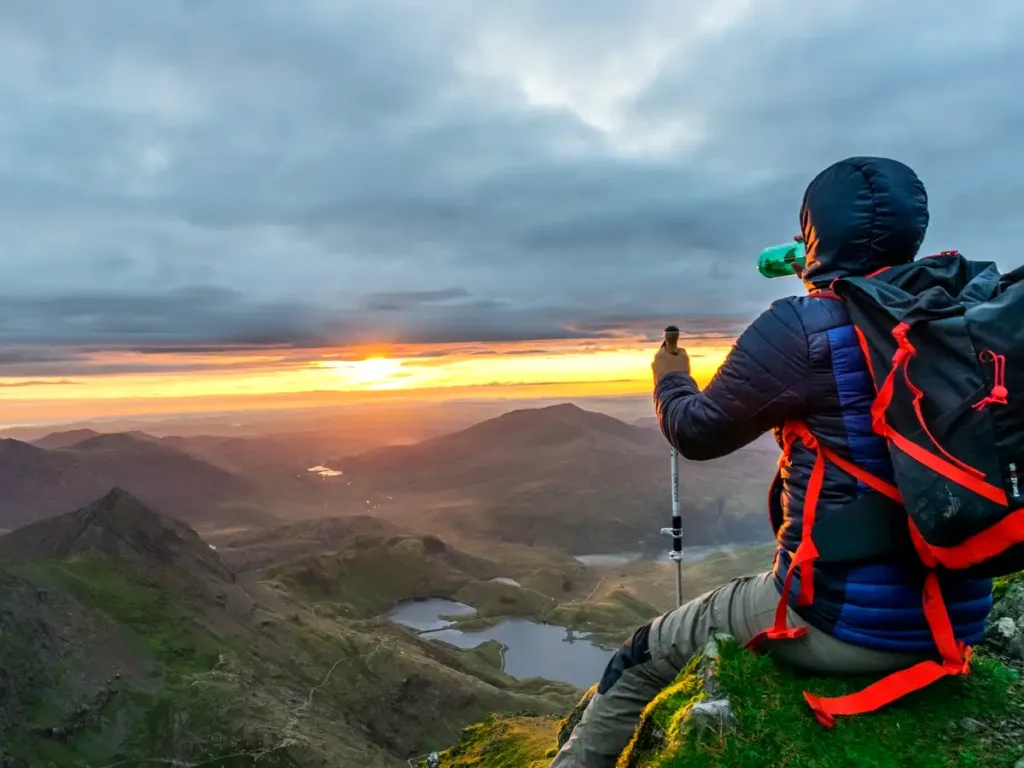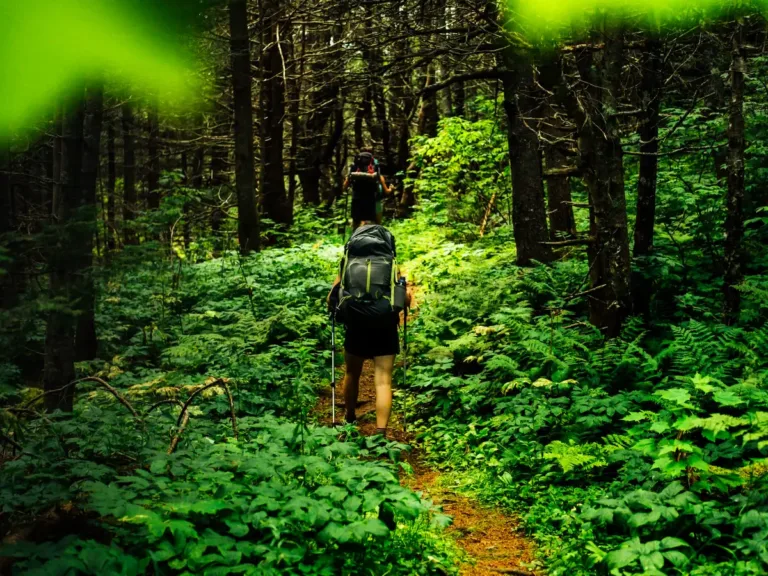How to Hike Without Getting Tired (9 tips)
This post may contain affiliate links. This means that we may receive a small commission from purchases through those links. Read more in our affiliate disclosure.
The path ahead is steep, and the summit is still miles away. Your legs are heavy, your breath is short, and your backpack feels like it’s filled with rocks. We’ve all been there, haven’t we? The exhilarating challenge of a hike can quickly turn into a grueling ordeal if you run out of stamina.
But what if I told you that hiking without getting tired is not just a hiker’s daydream? It’s a skill, and like any skill, it can be developed with knowledge, practice, and patience.
Hiking without getting tired involves a combination of proper planning, using the right gear, employing effective uphill hiking and breathing techniques, building physical and mental stamina, maintaining good nutrition and hydration, and prioritizing rest and recovery. Plan your hike according to the terrain and your capabilities, taking regular breaks and scheduling your hike to avoid the hottest part of the day. Opt for lightweight gear, proper footwear, and consider using walking poles. When hiking uphill, utilize zigzag paths, lean and drive techniques, and conserve energy. Practice paced breathing, nasal breathing, and exhale on exertion. Build your stamina through regular cardiovascular exercise, strength and flexibility training, and endurance workouts, while also focusing on mental resilience. Stay hydrated and consume nutritious snacks for sustained energy, and consider the benefits of caffeine.
- Introduction
- Proper Planning
- Understand the Terrain
- Know Your Limits
- Take Regular Breaks to recover your stamina
- Hike during the right time of day
- Choose The Right Gear
- Lightweight Gear makes you less tired
- Select Proper Footwear
- Consider using Walking Poles
- Choose the Right Backpack
- How to hike uphill without getting tired
- Utilize Zigzag Paths
- Lean and Drive Techniques
- Use Walking Poles to go uphill more easily
- Conserve Energy while Hiking Uphill
- Breathing Techniques
- How to build Stamina for long hikes
- Nutrition and Hydration
- Drink enough water
- Bring Nutritious Snacks for Sustained Energy
- Drink Coffee
- Eat a Balanced Diet in Daily Routine
- Rest and Recovery
- Conclusion
Proper Planning
Understand the Terrain
Every trail has a unique story to tell, and understanding this story is the first step towards a fatigue-free hike. The terrain dictates the rhythm of your hike.
Is it a steep incline or a gentle slope? Are you going to tread on rocky paths or smooth trails? Will you cross streams or stay dry? Knowing the answers to these questions allows you to prepare your body and mind for the journey ahead, and to pace yourself in a way that conserves energy.

Know Your Limits
In the world of hiking, self-awareness is a superpower. It’s essential to understand your physical capabilities and limitations.
If you’re a beginner or returning to hiking after a hiatus, it’s wise to start with less challenging trails. Gradually increase the difficulty level as your stamina improves. This approach not only reduces the risk of injuries but also helps you build endurance over time without exhausting yourself.
If you’re not sure, you can always select a circular hiking route that, when you’re halfway through, allows you to decide whether you want to return the short or the long way. In this way, you can simply listen to your body, and won’t have to worry about whether you can make it or not.
Take Regular Breaks to recover your stamina
The secret to hiking without getting tired isn’t about pushing your limits; it’s about knowing when to pause. Regular breaks are your best ally on a hike. They give your body a chance to recover, prevent fatigue, and make the hike more enjoyable. A good rule of thumb is to take a 5-minute break every hour.
There is one caveat to this: If you’re near the end of your hike, and can already feel your muscles being sore, it is often best to not stop. Slow down as much as you need to; but if you sit down for extended periods of time at this stage, your muscles will swell, and continuing the hike will just become more painful.

Hike during the right time of day
Timing is everything when it comes to hiking. Plan your hike to avoid the hottest part of the day, which is usually between 11 am and 3 pm. Hiking in cooler temperatures is less taxing on your body, and it also lets you enjoy the trail in a different light.
Also, align your hiking schedule with your body’s natural rhythms. If you’re a morning person, an early start might be best. If you’re a night owl, consider a late afternoon hike. (In this case, make absolutely sure to bring a light though, in case you won’t make it back by the time night falls!) This way, you’re hiking when your energy levels are naturally high.
Choose The Right Gear
Lightweight Gear makes you less tired
When it comes to hiking gear, the rule is simple: less is more. Every ounce you carry adds to the strain on your body. So, opt for lightweight gear that doesn’t compromise on functionality or safety. From your tent to your water bottle, going lightweight can make a significant difference in how tired you feel on the trail.
Select Proper Footwear
Your feet are the workhorses of your hike. They bear your weight, adapt to the terrain, and keep you moving forward. Therefore, selecting the right footwear is critical.
Choose hiking boots or shoes that provide comfort, support, and traction. They should be well-fitted and suitable for the terrain you’ll be hiking. An uncomfortable pair of shoes can not only cause blisters and sore feet but also sap your energy quickly.
When it comes to hiking without getting tired, lighter is definitely better. Each step you take with a heavy boot consumes more energy, which can add up over a long hike and sap your stamina.
This is where hiking sandals come into play. They are significantly lighter than traditional hiking boots, which means you expend less energy with each step. They also offer good support and traction, making them suitable for a variety of terrains. Plus, they provide the added benefits of better ventilation and quicker drying times, which can be a boon on hot days or when crossing streams.
Consider using Walking Poles
Walking poles are like an extra set of legs on a hike. They help distribute the weight you’re carrying, provide balance, and take some strain off your legs, especially when going uphill or downhill. Choose poles that are lightweight and adjustable. With the right technique, walking poles can significantly enhance your hiking efficiency and endurance.

Choose the Right Backpack
Your backpack is more than just a bag; it’s what carries your survival essentials. Choose a backpack that is lightweight, comfortable to wear, and big enough to hold your gear. It should have a good weight distribution system to avoid straining your back and shoulders. An ill-fitted or overloaded backpack can tire you out faster than anything else on the trail.
How to hike uphill without getting tired
Hiking uphill can be a real energy drainer, but with the right techniques, you can conquer those inclines without exhausting yourself. Here are some strategies to help you hike uphill more efficiently.
Utilize Zigzag Paths
When faced with a steep incline, the most direct route isn’t always the best. Instead of going straight up, try zigzagging or taking a switchback path. This technique, often called “switchbacking,” reduces the steepness of the climb by spreading it over a longer distance. It might make your hike a bit longer, but it will also make the ascent more manageable and less tiring.
Lean and Drive Techniques
Your body posture plays a crucial role in uphill hiking. The “Lean and Drive” technique involves leaning into the hill and driving forward with your legs. This posture engages your larger leg muscles, which have more stamina than the smaller ones.
However, be careful not to lean too far forward as it can strain your back. Try to keep your back straight and lean from your hips. Also, keep your head up and look forward, not down. This keeps your airways open, making breathing easier.
Use Walking Poles to go uphill more easily
Walking poles can be a game-changer when hiking uphill. They provide additional points of contact with the ground, improving your balance and stability.
When going uphill, adjust your poles to a shorter length, and use them to push off the ground. This action engages your upper body muscles, taking some of the load off your legs and distributing it more evenly across your body.
Plant the pole on the ground before you step, not as you step. This gives you the maximum benefit from the push-off.
Conserve Energy while Hiking Uphill
Conserving energy is key to hiking uphill without getting tired. Here are a few tips:
- Pace yourself: Start slow and maintain a steady pace. It’s better to maintain a slow pace than to start fast and have to stop and rest frequently.
- Breathe: Uphill hiking can be strenuous, and it’s easy to fall into a pattern of shallow, quick breaths. Try to maintain a steady, deep breathing pattern to ensure your muscles get the oxygen they need.
- Step smart: Place your whole foot on the ground, not just your toes. This gives you more stability and uses less energy.
- Stay hydrated and fueled: Drink water and eat high-energy snacks regularly to keep your energy levels up.
Breathing Techniques
Breathing might seem like the most natural thing in the world, but when it comes to hiking, especially long and strenuous hikes, the way you breathe can have a significant impact on your stamina and overall hiking experience.
Paced Breathing
Paced breathing is a technique where you synchronize your breath with your steps. For instance, you might inhale for two steps and exhale for two steps. This technique helps maintain a steady flow of oxygen to your muscles, which can improve your endurance and reduce fatigue. It also creates a rhythm that can help you maintain a steady pace, making your hike more efficient.
Nasal Breathing
Nasal breathing, as the name suggests, involves inhaling and exhaling through your nose. This method has several advantages over mouth breathing.
First, it warms and humidifies the air before it reaches your lungs, which can be beneficial in cold weather. Second, it helps regulate your breathing rate, which can prevent hyperventilation and promote calmness and focus. Finally, it encourages deeper, diaphragmatic breathing, which is more efficient than shallow, chest-level breathing.
Exhale on Exertion
Exhaling on exertion is a technique often used by weightlifters, but it’s also useful for hikers. The idea is to exhale during the most strenuous part of an action. For example, when hiking uphill, you might exhale each time you lift your leg for a step. This technique can make the action feel less strenuous and help maintain a steady breathing rhythm.
Breathing Exercises for Hikers
Breathing exercises can be a valuable tool for hikers. They can help train your lungs and diaphragm, improve your breathing efficiency, and increase your lung capacity. Here are a few exercises you might try:
- Diaphragmatic breathing: Lie on your back with your knees bent. Place one hand on your chest and the other on your abdomen. Inhale deeply through your nose, trying to make the hand on your abdomen rise more than the one on your chest. Exhale slowly through your mouth. Repeat for several minutes.
- Box breathing: Inhale for a count of four, hold your breath for a count of four, exhale for a count of four, then wait for a count of four before inhaling again. This exercise can help calm your mind and regulate your breath.
- Pursed lip breathing: Inhale slowly through your nose, then exhale slowly through pursed lips, as if blowing out a candle. This exercise can help slow your breathing rate and keep your airways open longer, making your breaths more efficient.
Incorporating these breathing techniques and exercises into your hiking routine can help you hike longer, faster, and with less fatigue. So, give them a try on your next hike, and see the difference they can make.
How to build Stamina for long hikes
Stamina is the fuel that keeps you going on a hike. It’s not just about physical strength, but also about cardiovascular fitness, flexibility, and mental resilience. Here’s how you can build your hiking stamina.
Regular Cardiovascular Exercise
Cardiovascular exercise, also known as cardio, is the cornerstone of hiking fitness. It strengthens your heart and lungs, improves your body’s ability to deliver oxygen to your muscles, and builds endurance for long hikes.
Activities like running, cycling, swimming, or even brisk walking can serve as effective cardio workouts. Aim for at least 150 minutes of moderate-intensity cardio each week.
When you go on short hikes, you can increase the positive effect on your stamina by climbing hills as fast as you can. It’s basically intervall training for hikers. The more tired you can make yourself now, the less tired you will be on your next long hike.
Strength and Flexibility Training
Strength training enhances your body’s power and resilience, making it easier to tackle challenging terrains and carry a backpack for hours. Focus on exercises that target your core and lower body, such as squats, lunges, and planks.
Flexibility, on the other hand, improves your range of motion, helping you navigate tricky trails with ease. Incorporate stretching exercises into your routine to keep your muscles limber and prevent injuries.
Build Mental Stamina
Hiking is as much a mental challenge as it is a physical one. Building mental stamina helps you stay focused, maintain a positive attitude, and push through tough sections of the trail.
Practices like meditation, mindfulness, and visualization can enhance your mental resilience. Also, celebrate your achievements, no matter how small they may seem. Every step forward is progress.
Nutrition and Hydration
What you fuel your body with before, during, and after a hike can significantly impact your energy levels and recovery.
Drink enough water
Water is vital for your body’s functions, and staying hydrated is especially important when you’re exerting yourself on a hike. Dehydration can lead to fatigue, reduced coordination, and muscle cramps. Make sure to drink water before you start your hike, and take regular sips along the way, even if you don’t feel thirsty.
On long hikes, maintaining hydration can be a challenge. Carry enough water, but also consider using a hydration bladder for easy access. Electrolyte tablets or sports drinks can help replace salts lost through sweat.

Bring Nutritious Snacks for Sustained Energy
When you’re hiking, your body needs a steady supply of energy. Nutritious snacks can provide this energy. Opt for foods that are high in complex carbohydrates and protein, such as nuts, dried fruit, energy bars, or cheese. These foods provide long-lasting energy and keep you feeling full longer.
Drink Coffee
Coffee, or more specifically, the caffeine it contains, can be a valuable ally on your hiking adventures. Caffeine is a natural stimulant that affects the central nervous system, temporarily warding off drowsiness and restoring alertness. But its benefits extend beyond just keeping you awake and mentally alert.
Caffeine has been shown to improve various aspects of exercise performance. It can increase endurance, reduce perceived exertion, and enhance physical strength and power output. This means you might be able to hike longer, feel less tired, and tackle more challenging terrains when you consume caffeine before your hike.
The endurance-enhancing effects of caffeine are particularly beneficial for long hikes. Caffeine appears to spare your glycogen stores (your muscles’ primary fuel source for high-intensity exercise) by increasing fat utilization. In other words, your body uses more fat for energy, preserving glycogen and delaying the onset of fatigue.

Eat a Balanced Diet in Daily Routine
Your everyday diet also plays a role in your hiking performance. A balanced diet that includes a variety of nutrients can help your body recover from hikes and prepare for the next one. Make sure to include plenty of fruits, vegetables and lean proteins in your meals.
Rest and Recovery
Rest and recovery are just as important as the hike itself. They allow your body to repair, adapt, and strengthen itself for future hikes. In fact, you only get stronger while you rest, let that sink in!
We have an entire article on how to recover quickly. In a nutshell, get good sleep, eat nutritious meals, stretch, use cold or alternating showers, and go on relaxed walks for active recovery.
Conclusion
Hiking without getting tired is not a destination, but a journey. It involves learning about your body, practicing different techniques, and gradually building your stamina, strength, and resilience. It’s about finding joy in the journey, not just reaching the summit.
So, fellow trail dwellers, I encourage you to implement these tips on your next hike. Start with one or two, and add more as you go. Remember, every step you take is a step towards becoming a more capable and confident hiker.
I invite you to share your own tips and experiences. How do you hike without getting tired? What challenges have you faced, and how have you overcome them? Your insights could be the beacon that guides other hikers on their journey.




